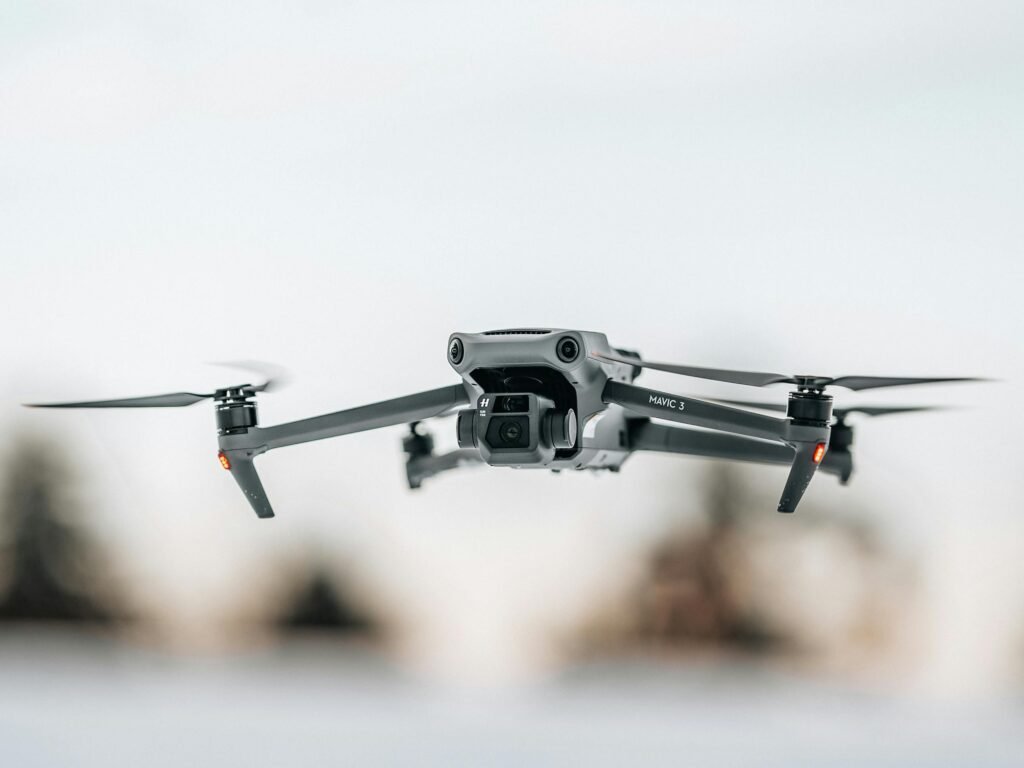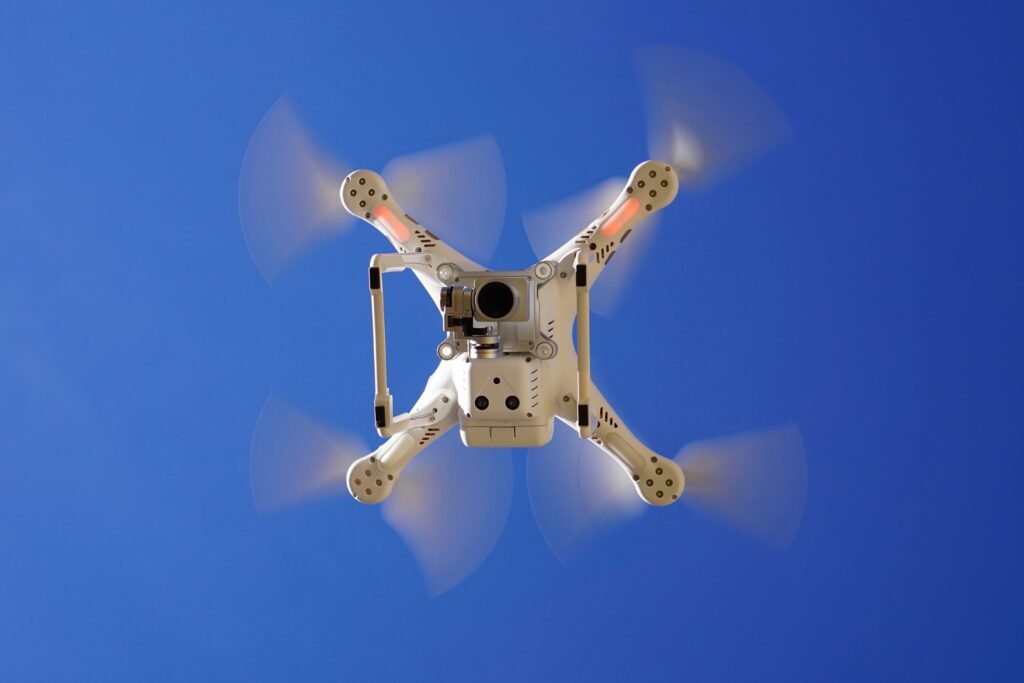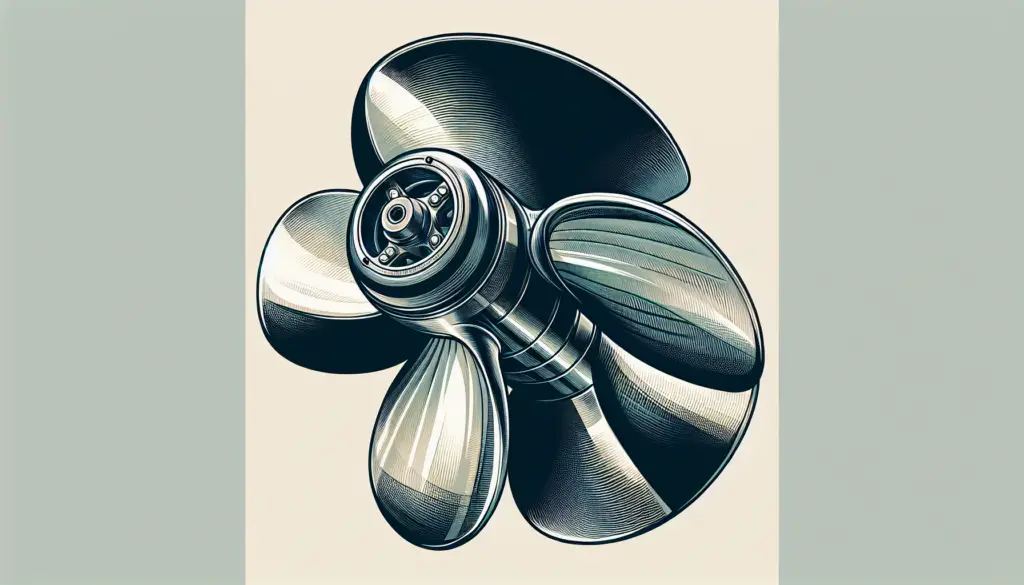Are you a boat owner looking to upgrade or replace your boat’s propeller? Well, you’ve come to the right place! In this article, we will provide you with a comprehensive buyer’s guide that will help you navigate through the overwhelming options and make an informed decision. Choosing the right propeller for your boat is crucial as it directly impacts your boat’s performance, fuel efficiency, and overall boating experience. So sit back, relax, and let us walk you through the key factors to consider when selecting the perfect propeller for your beloved watercraft.

Different Types of Propellers
Aluminum Propellers
Aluminum propellers are a popular choice for boat owners due to their affordability and durability. These propellers are made from aluminum alloy, which makes them resistant to corrosion caused by saltwater. They are also lightweight, which helps in improving the overall performance of the boat. However, aluminum propellers are not as strong as stainless steel propellers, and they may bend or deform under heavy load or impact.
Stainless Steel Propellers
Stainless steel propellers are known for their strength and durability. These propellers are made from a mixture of steel and other metals, which makes them highly resistant to corrosion and damage. Stainless steel propellers are ideal for boats that require maximum performance, especially in rough waters or when towing water sports enthusiasts. However, these propellers tend to be more expensive than aluminum propellers.
Composite Propellers
Composite propellers are a newer addition to the market and are made from a combination of materials such as plastic, carbon fiber, or fiberglass. These propellers offer a good balance between affordability and performance. They are durable and resistant to corrosion, but they may not be as strong as stainless steel propellers. Composite propellers are suitable for recreational boats and can deliver sufficient performance for most boating activities.
Understanding Propeller Basics
Pitch
The pitch of a propeller refers to the distance that a propeller would travel in one complete revolution, assuming there is no slippage. It is typically measured in inches. A higher pitch propeller will allow your boat to achieve higher top speeds, but it may sacrifice low-end power and acceleration. Conversely, a lower pitch propeller will provide better acceleration and low-end power, but it may limit the top speed of your boat.
Diameter
The diameter of a propeller refers to the distance across the blades when measured from the center of the hub. Generally, larger diameter propellers provide greater thrust and are suitable for heavier boats or boats that require more power. Smaller diameter propellers, on the other hand, are better suited for lighter boats or boats that prioritize speed and maneuverability.
Number of Blades
The number of blades on a propeller can range from three to five or even more. The number of blades affects the overall performance of the propeller. Propellers with fewer blades generally offer higher top speeds, while those with more blades provide better acceleration and low-speed performance. The choice of blade count depends on the specific needs and preferences of the boat owner.
Cupping
Cupping refers to the curve or cup at the trailing edge of a propeller blade. This cupping can improve the efficiency of the propeller by reducing cavitation and increasing thrust. Propellers with cupped blades are ideal for boats that require better low-speed maneuverability, such as fishing boats. Cupping can also help reduce propeller slip and improve overall fuel efficiency.

Factors to Consider
Boat Type
Different boat types have different requirements when it comes to propellers. A pontoon boat, for example, may require a propeller that provides excellent low-speed handling and maneuverability. On the other hand, a high-performance speedboat may prioritize top speed and acceleration. Consider the type of boat you have and its specific needs when choosing a propeller.
Boat Weight
The weight of your boat also plays a significant role in propeller selection. Heavier boats require more power to move through the water, so a larger diameter propeller may be necessary to provide sufficient thrust. Lighter boats, on the other hand, may benefit from smaller diameter propellers to improve speed and maneuverability.
Boat Usage
Consider how you intend to use your boat. If you plan on using it primarily for water sports or towing activities, a propeller with a higher pitch and more blades may be appropriate. If you are a fishing enthusiast, you may want to consider a propeller with cupped blades for better low-speed maneuverability. Understanding your boat’s intended usage will help determine the propeller characteristics that are most important to you.
Engine Specifications
The specifications of your boat’s engine, including horsepower and torque, can affect the choice of propeller. Consult your boat’s manufacturer or an experienced professional to ensure compatibility between your engine and propeller. The propeller should be able to handle the power output of your engine while providing optimal performance for your boating needs.
Performance Requirements
Consider the specific performance requirements you have for your boat. Do you prioritize top speed, acceleration, fuel efficiency, or maneuverability? Each propeller characteristic can affect these aspects of your boat’s performance. Determining your priorities will help you choose a propeller that best suits your needs.
Calculating the Right Pitch and Diameter
Pitch Formula
To calculate the ideal pitch for your propeller, you can use a simple formula. Divide the forward travel distance in one revolution of the propeller by the pitch. The resulting number will give you the theoretical pitch of your propeller. Keep in mind that the actual pitch may vary due to factors such as slippage and hull design.
Diameter Formula
The diameter of your propeller should be determined based on the horsepower and torque of your boat’s engine, as well as the boat’s weight and intended usage. Using a propeller sizing chart or consulting a professional can help ensure that you select a diameter that provides sufficient thrust and performance.
Selecting the Ideal Pitch and Diameter
Once you have calculated the theoretical pitch and diameter for your propeller, you can fine-tune your selection based on your boat’s specific requirements. Consider factors such as the desired top speed, acceleration, and fuel efficiency. It may be helpful to consult with a propeller specialist or seek advice from experienced boaters to ensure you make the best choice for your boat.

Choosing the Number of Blades
Effect of Blade Count on Performance
The number of blades on a propeller has a direct impact on its performance characteristics. Propellers with fewer blades tend to offer higher top speeds, as they produce less drag. However, these propellers may sacrifice low-speed performance and acceleration. Propellers with more blades provide better low-speed performance, acceleration, and maneuverability but may limit the top speed potential of your boat.
Balancing Speed and Efficiency
Finding the right balance between speed and efficiency depends on your boat’s specific needs and intended usage. If speed is a priority, a propeller with fewer blades may be suitable. However, if you require better low-speed handling and acceleration, a propeller with more blades may better suit your needs. Consider factors such as horsepower, torque, and boat weight when choosing the number of blades for your propeller.
Considering Cupping
What is Cupping?
Cupping refers to the concave curve on the trailing edge of a propeller blade. This cupping can improve the propeller’s efficiency by reducing cavitation and increasing thrust. Cupped propellers can provide benefits such as better low-speed handling, improved fuel efficiency, and reduced propeller slip.
Benefits of Cupped Propellers
Cupped propellers are known for their ability to enhance low-speed maneuverability, which can be advantageous for activities such as fishing or docking. The cupping action helps to create more lift, resulting in improved acceleration and reduced propeller slip. Additionally, cupping can reduce cavitation, which enhances the overall efficiency of the propeller and improves fuel economy.
When to Choose Cupped Propellers
Cupped propellers are ideal for boats that require better low-speed maneuverability and acceleration. If you frequently engage in activities that involve slow trolling or precise maneuvering, such as fishing, a cupped propeller can provide significant benefits. However, if top speed is your main priority, a cupped propeller may not be the best choice, as it may slightly reduce top speed potential.

Matching the Propeller to Boat Type
Round-Bottomed Hulls
Boats with round-bottomed hulls require propellers that can provide efficient lift and propulsion. These hulls tend to generate more drag, so propellers with higher thrust and lower pitch may be suitable. Consider propellers with more blades to achieve better low-speed performance and maneuverability.
V-Hulled Boats
V-hulled boats are designed for speed and performance. These boats require propellers that can deliver high top speeds while maintaining efficiency. Propellers with fewer blades and higher pitch may be the best choice for V-hulled boats, as they offer reduced drag and improved top speed potential.
Pontoon or Catamaran Boats
Pontoon or catamaran boats have unique requirements due to their design. Propellers with good low-speed handling and maneuverability are essential for these types of boats. Consider cupped propellers or propellers with more blades to achieve better low-speed performance. You may also need to consider larger diameter propellers to provide sufficient thrust for the weight of these boats.
Special Considerations for Fishing Boats
Low-Speed Maneuverability
Fishing boats often require precise and slow-speed maneuverability, especially when navigating around obstacles or docking. Propellers with cupped blades can help improve low-speed handling, providing better control and maneuverability for anglers.
Reducing Prop Noise
Prop noise can be a common issue for fishing boats, as it can disturb the fish and impact the overall fishing experience. Selecting a propeller with features designed to reduce noise, such as smooth blade designs or noise-reducing materials, can help minimize propeller noise and improve your chances of a successful fishing trip.
Enhancing Fishability
For fishing enthusiasts, having a propeller that maximizes fishability is crucial. This means selecting a propeller that allows for precise control, minimal noise, and minimal disturbance to the water. Propellers with cupped blades and moderate pitch may provide the desired characteristics for an ideal fishing experience.

Impacts of Boat Weight
Lightweight Boats
Lightweight boats generally require smaller diameter propellers to achieve optimal performance. Smaller diameter propellers offer reduced drag and improved speed potential for lighter boats. Consider the horsepower and torque of your engine and choose a propeller that can provide sufficient thrust for the weight of your lightweight boat.
Heavyweight Boats
Heavyweight boats require larger diameter propellers to provide sufficient thrust and power. Larger diameter propellers offer greater surface area and can generate more lift, allowing heavy boats to move through the water more efficiently. Consider the weight of your boat and the engine specifications when selecting a propeller for a heavyweight boat.
Factors Affecting Performance
Top Speed
For boat owners who prioritize top speed, selecting a propeller with higher pitch and fewer blades may be the best choice. These propellers offer reduced drag and increased speed potential.
Acceleration
Better acceleration and low-speed performance can be achieved with propellers that have more blades and lower pitch. These propellers provide increased thrust at lower speeds, allowing for quick acceleration.
Fuel Efficiency
Efficiency-conscious boaters may consider propellers with cupped blades, as they can help reduce cavitation and improve overall fuel efficiency. Additionally, choosing the right pitch and diameter for your boat’s specific performance requirements can further enhance fuel economy.
Handling and Maneuverability
The handling and maneuverability of your boat can be greatly influenced by the type of propeller you choose. Propellers with more blades and cupped designs are generally better suited for slow-speed maneuvering, while those with fewer blades and higher pitch offer improved control at higher speeds. Consider your boat’s specific needs and intended usage when choosing a propeller that provides optimal handling and maneuverability.

